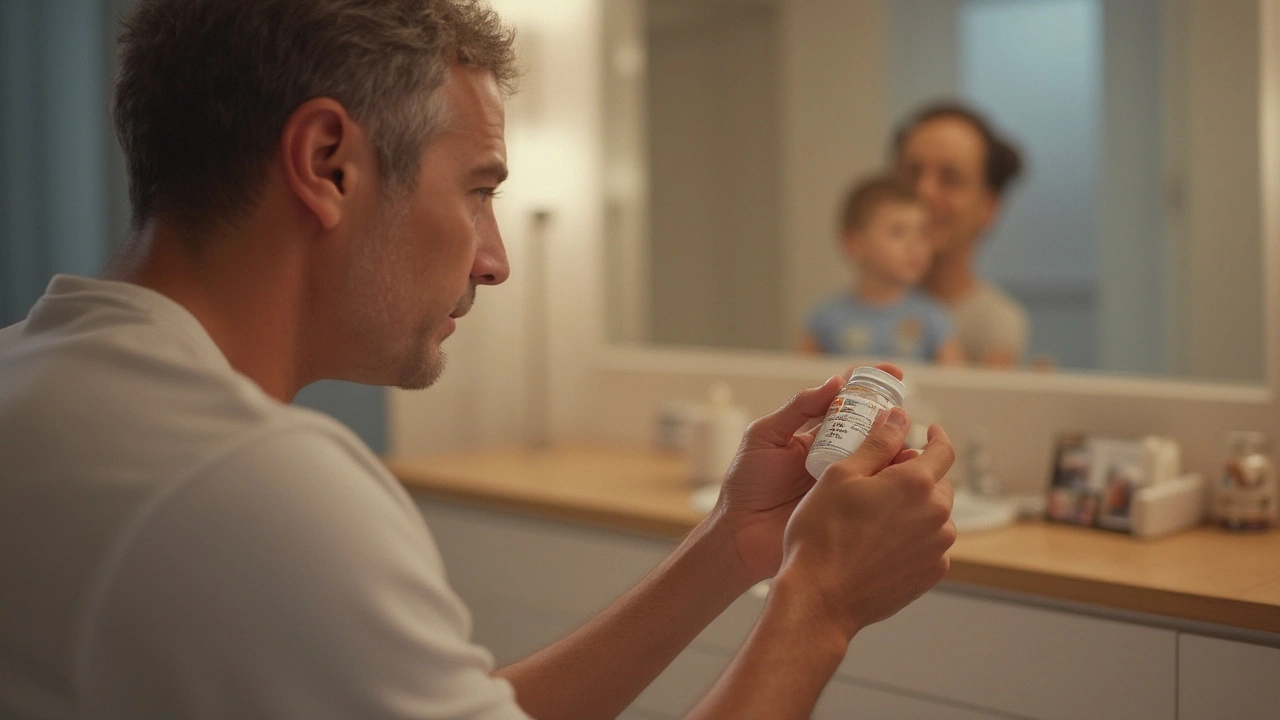Hair Loss: What’s Happening and How to Deal With It
Seeing more hair on your pillow or in the shower can be unsettling. The good news is that most hair loss isn’t a mystery – it’s usually linked to genetics, hormones, stress, or medication. Understanding the why helps you pick the right fix fast.
Common Triggers You Can Spot
Genetics. If your dad or granddad went bald early, chances are you could see the same pattern. It typically starts with a receding hairline or a thinning crown.
Hormones. Changes in testosterone or thyroid levels can speed up shedding. Women may notice more hair loss after pregnancy or during menopause.
Stress. A tough exam, a new job, or a serious illness can push more hairs into the “resting” phase. This type of shedding usually peaks a few months after the event and then regrows.
Medications. Some drugs listed on our site, like certain antibiotics or blood pressure pills, list hair loss as a side effect. If you start a new prescription and notice thinning, talk to your doctor.
What Works: Practical Treatments
Topical solutions. Minoxidil (often sold as a liquid or foam) is the most common over‑the‑counter option. Apply it twice daily to a clean scalp; most people see improvement after three to six months.
Prescription meds. Finasteride works for men by blocking the hormone that shrinks hair follicles. Women usually avoid it because of potential side effects.
Hair‑growth supplements. Biotin, zinc, and iron can help if you’re deficient. Our articles on vitamins explain the right dosages and what to watch for.
Low‑level laser therapy. Handheld devices or caps emit red light that may boost follicle activity. Results vary, but many users report thicker hair after consistent use.
Lifestyle tweaks. Eat a balanced diet rich in protein, stay hydrated, and manage stress with exercise or meditation. These habits don’t replace meds but they keep your scalp healthy.
While some people turn to hair transplants, keep in mind it’s a surgical step that requires a qualified clinic and a realistic budget. If you’re curious, read our guide on what to expect before making a decision.
Bottom line: start with the simplest steps—check your diet, reduce stress, and try an over‑the‑counter topical. If you don’t see change after a few months, schedule a chat with a dermatologist who can tailor a plan just for you.
Avodart: Uses, Benefits, Side Effects & Everything You Should Know
Explore how Avodart works for prostate issues and hair loss, learn about real-world results, side effects, and tips for safe use. Clear facts, no fluff.
Rogaine: The Real Science Behind Minoxidil and Hair Loss Solutions
Rogaine is probably the most talked-about hair loss solution in every pharmacy aisle across the UK. But does it actually work, what should you expect, and where do people go wrong with it? This article dives deep into minoxidil, the science behind Rogaine, real-life tips, and answers the awkward questions people never ask aloud. Curious about side effects, usage hacks, or why some see baby hairs and others just get frustrated? Everything you ever wanted to know about Rogaine is right here.


